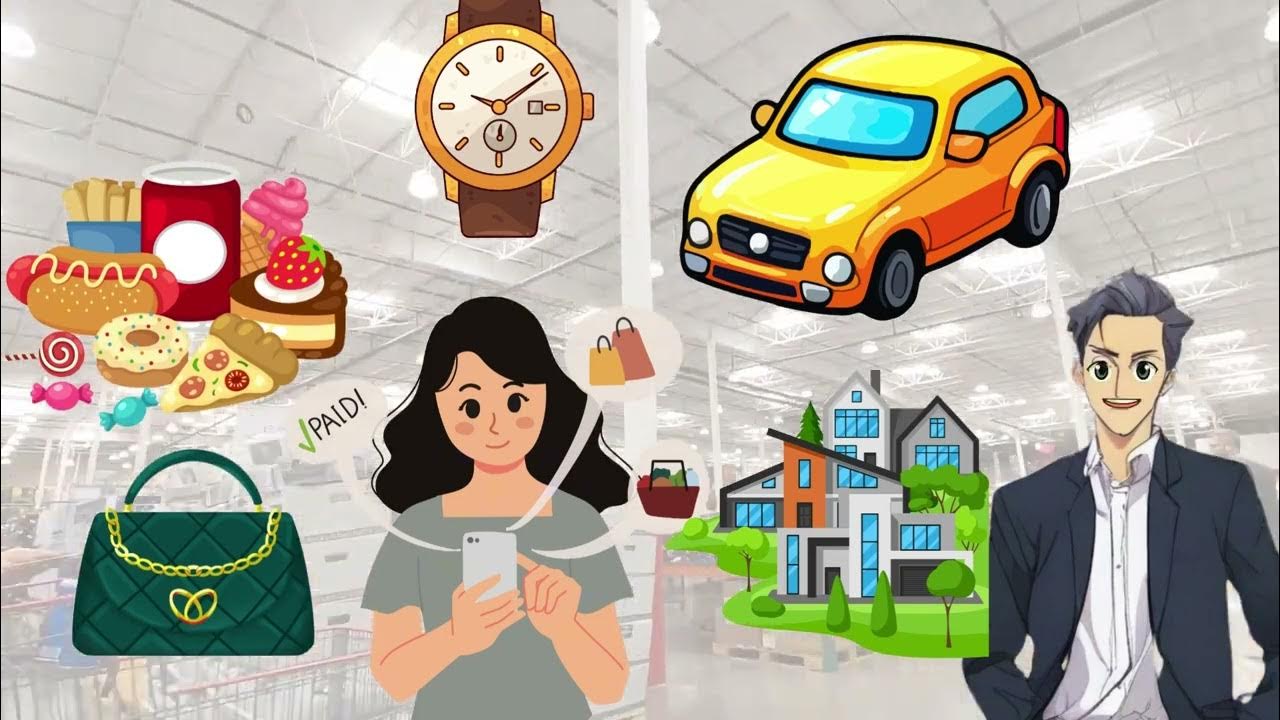Scarcity and the Fundamental Economic Problem
Summary
TLDRThis video discusses the fundamental economic problem of scarcity. People have unlimited wants, but the resources available to meet those wants are limited. The video explores how scarcity forces trade-offs in various areas such as electricity, organic food, healthcare, education, and housing. While advancements in technology can help meet more of these wants, the constraints of finite resources, like land and materials, mean that satisfying everyone's desires remains a challenge. Economics revolves around making choices on how best to allocate these limited resources.
Takeaways
- 🌍 People have unlimited wants, but resources in the world are limited.
- 💡 The concept of scarcity arises because resources are finite while desires are infinite.
- ⚖️ Economics focuses on how individuals and societies make trade-offs due to limited resources.
- 🔌 Providing universal access to electricity is challenging because resources like coal and natural gas are limited.
- 🌬 Renewable energy sources like wind power are also limited by available space for windmills.
- 🌾 There's limited land for growing organic food, especially with lower yields due to avoiding pesticides.
- 🏥 Quality healthcare for everyone is hard to achieve due to the shortage of doctors and the costs involved.
- 🎓 Education faces limitations in resources, such as the availability of professors and funds.
- 🏠 Building homes for everyone faces restrictions like limited land and materials such as wood and bricks.
- 📈 Technological advancements can help increase resource efficiency, but the gap between unlimited wants and finite resources will always exist.
Q & A
What is the fundamental economic problem discussed in the video?
-The fundamental economic problem is that people have unlimited wants, but the resources available to satisfy those wants are limited.
What does scarcity mean in the context of economics?
-Scarcity refers to the limited availability of resources, while people's wants and needs are infinite. This creates a challenge in allocating resources efficiently.
Why can't everyone's wants be fully satisfied?
-Everyone's wants can't be fully satisfied because the world has a limited supply of resources, such as land, energy, and labor, which are not sufficient to meet all demands.
How does scarcity relate to electricity production?
-Scarcity affects electricity production because resources like coal and natural gas, which are used to generate electricity, are finite. Even renewable energy sources like wind have limits due to limited space for windmills.
Why are trade-offs necessary in resource allocation?
-Trade-offs are necessary because using resources for one purpose, like producing electricity, limits their availability for other uses, such as manufacturing steel or growing food.
How does scarcity impact access to organic foods?
-Scarcity impacts access to organic foods because there is limited land available for agriculture, and organic farming often has lower yields due to the lack of pesticides, further limiting supply.
What challenges exist in providing universal high-quality healthcare?
-Challenges include the limited number of doctors and healthcare professionals, as well as the resources needed to compensate them. Healthcare also consumes a large portion of the economy, making universal access difficult.
Why is it difficult for everyone to access college education?
-It is difficult because there are limited numbers of professors, educational institutions, and financial resources to support widespread access to higher education.
What role do technological advancements play in solving the problem of scarcity?
-Technological advancements can help by making resources more efficient and allowing us to satisfy more wants over time, but they cannot fully eliminate scarcity.
Why is the concept of infinite wants important in economics?
-The concept of infinite wants is important because it drives the need for choices and trade-offs in resource allocation. Since we can't satisfy all wants, economics focuses on how to best allocate limited resources.
Outlines

Dieser Bereich ist nur für Premium-Benutzer verfügbar. Bitte führen Sie ein Upgrade durch, um auf diesen Abschnitt zuzugreifen.
Upgrade durchführenMindmap

Dieser Bereich ist nur für Premium-Benutzer verfügbar. Bitte führen Sie ein Upgrade durch, um auf diesen Abschnitt zuzugreifen.
Upgrade durchführenKeywords

Dieser Bereich ist nur für Premium-Benutzer verfügbar. Bitte führen Sie ein Upgrade durch, um auf diesen Abschnitt zuzugreifen.
Upgrade durchführenHighlights

Dieser Bereich ist nur für Premium-Benutzer verfügbar. Bitte führen Sie ein Upgrade durch, um auf diesen Abschnitt zuzugreifen.
Upgrade durchführenTranscripts

Dieser Bereich ist nur für Premium-Benutzer verfügbar. Bitte führen Sie ein Upgrade durch, um auf diesen Abschnitt zuzugreifen.
Upgrade durchführenWeitere ähnliche Videos ansehen

Kelangkaan Sebagai Permasalahan Ekonomi Manusia (Penyebab Kelangkaan)

Introduction to Microeconomics | Chapter 1 | Part 1 | Microeconomics

Types of Goods and the 3 Basic Economic Questions

Project IPAS Aspek Perilaku Ekonomi dan Kesejahteraan

The basic economic problem

KONSEP DASAR ILMU EKONOMI (Materi Pembelajaran Ekonomi/IPS Fase E/Kelas X SMA/MA)
5.0 / 5 (0 votes)
